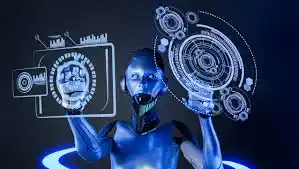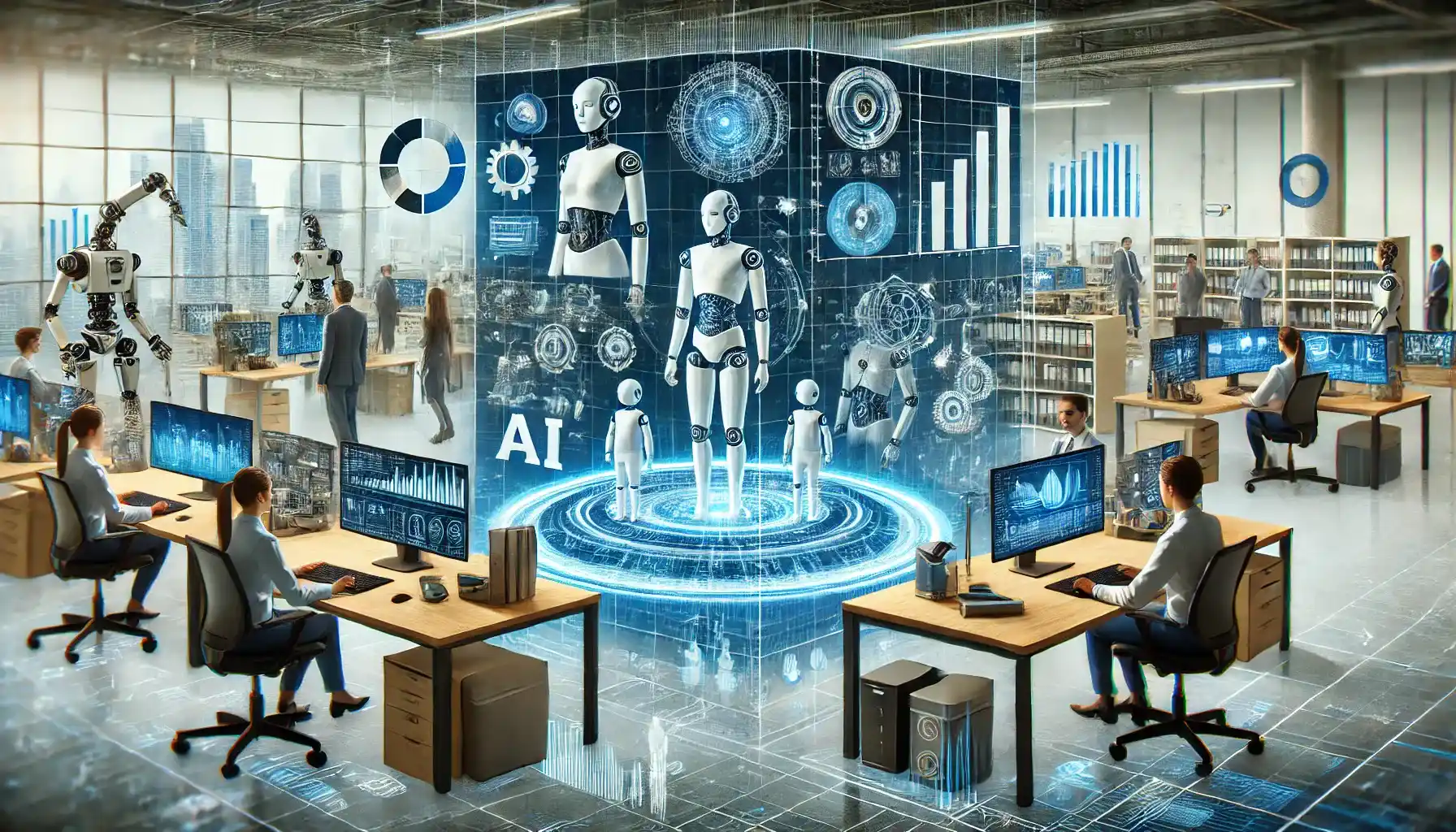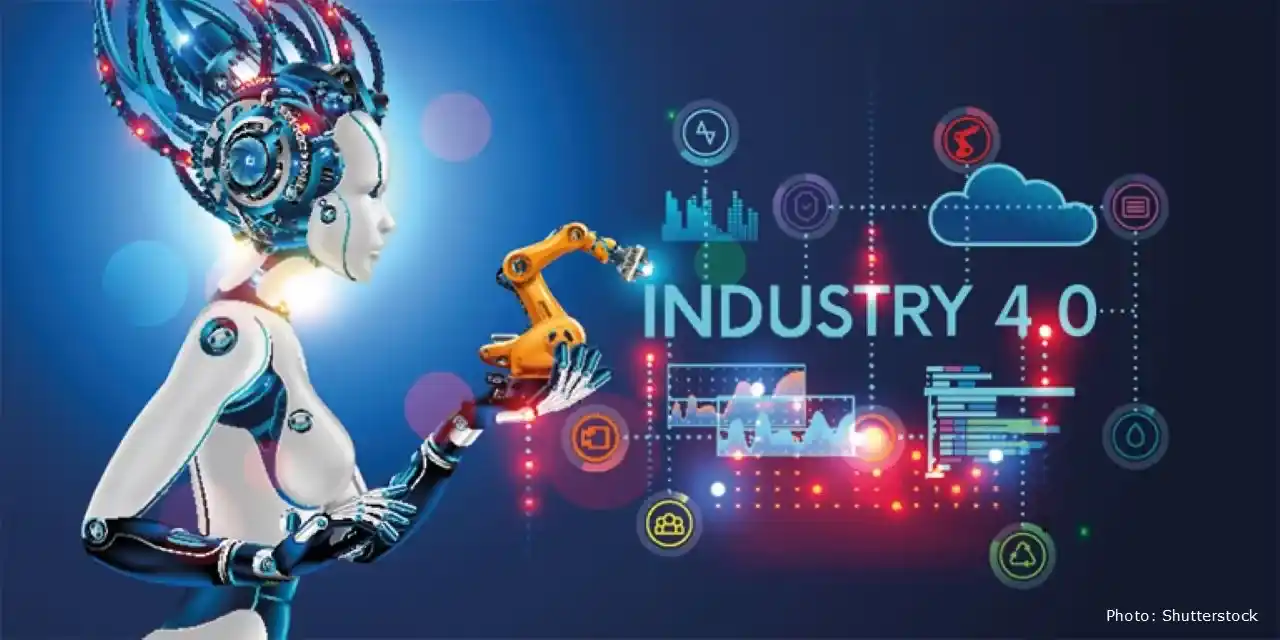Table of Contents
AI and automation, digital platforms, and other innovations are fundamentally altering the nature of work. AI and automation are revolutionizing how businesses communicate with their consumers and execute internal processes, reinventing operations across industries. Understanding these shifts is crucial for innovators, business leaders, and professionals to navigate and capitalize on these changes.
According to PwC’s Global Artificial Intelligence Study, AI has the potential to add as much as $15.7 trillion to the global economy by 2030. This article explores the top industries impacted by AI and automation and how they are transforming the workforce requirements within these sectors.
The Transformative Power of AI and Automation
Automation and AI(Artificial Intelligence) are driving business transformation and economic growth by significantly boosting productivity. They also address “moonshot” societal challenges in areas ranging from health to climate change. These technologies are reshaping the workplace by enabling machines to carry out more tasks traditionally done by humans, complementing human work, and even performing tasks beyond human capabilities.
While it is expected that there will be enough work to go around, society must manage significant workforce transitions and dislocation. Workers will need to acquire new skills and adapt to working alongside increasingly capable machines. They may need to transition from declining occupations to growing and, in some cases, entirely new ones.
1. Accelerating Progress in AI and Automation
- Accelerating progress in AI and automation is creating vast opportunities for businesses, the economy, and society. While automation and AI are not new, recent technological advancements such as high-impact AI use cases are pushing the boundaries of what machines can achieve.
- Our research highlights the necessity of these improvements to provide value for businesses, contribute to economic growth, and address some of our most challenging societal issues.
- The latest AI advances, addressing classification, estimation, and clustering problems, promise even greater value, revolutionizing business operations and driving economic growth.

2. Rapid Technological Progress
- Recent advancements have led to the emergence of more capable autonomous systems, from autonomous vehicles to automated check-outs. This progress has been driven by improvements in mechanics, sensors, and software.
- AI, in particular, has made significant strides, with machine-learning algorithms becoming more sophisticated, leveraging increased computing power, and utilizing vast amounts of data.
- Notable breakthroughs include beyond-human capabilities in computer vision, natural language processing, and complex games like Go.

- AI and automation are already generating value across various products and services. Companies use these technologies for personalized product recommendations, anomaly detection in production, fraud identification, and more.
3. Automatable Activities
- About half of the activities performed by workers could be automated. Our analysis of more than 2000 work activities across over 800 occupations shows that certain categories are more easily automatable than others.
- This encompasses physical tasks in highly controlled and organized environments, along with data gathering and processing activities.

- Even as AI and automation bring significant benefits to businesses and society, major disruptions to work are inevitable.
- In contrast, managing others, providing expertise, and interfacing with stakeholders are less susceptible to automation.
4. Occupational Impact
- Nearly all occupations will be affected by automation, but only about 5% could be fully automated with currently demonstrated technologies. Many more occupations have portions of their activities that are automatable.
- Approximately 30% of the activities in 60% of all occupations could be automated. This means that most workers—from welders to mortgage brokers to CEOs—will work alongside rapidly evolving machines, fundamentally changing the nature of their roles.
- Automation will displace some workers. Around 15% of the global workforce, or about 400 million workers, could be displaced by automation between 2016 and 2030. However, there will also be significant job creation.

5. Job Creation and Transformation
- Even as workers are displaced, there will be significant growth in demand for work and consequently jobs. Scenarios for labor demand to 2030 suggest an additional labor demand of 21% to 33% of the global workforce, more than offsetting the number of jobs lost.
- Emerging economies, like India, will see some of the largest gains. Additionally, new occupations that we cannot currently imagine will emerge, potentially accounting for up to 10% of jobs created by 2030. More jobs will be changed than those lost or gained as machines complement human labor.
- Partial automation will become more prevalent; for example, AI algorithms that can read diagnostic scans with high accuracy will assist doctors in diagnosing and treating patients.
- Jobs involving repetitive tasks will transition to overseeing and maintaining automated systems. At companies like Amazon, employees who once handled manual tasks are now overseeing automated systems, acting as robot operators and troubleshooting technical issues.
Conclusion
AI and automation are undoubtedly transforming the landscape of work, bringing both opportunities and challenges. While these technologies promise significant productivity gains and economic growth, they also necessitate major workforce transitions. As AI and automation integrate into various sectors, some jobs will be displaced, but many new opportunities will emerge, and existing roles will evolve.
The key to navigating this transformation lies in proactive adaptation: workers need to acquire new skills, businesses must innovate their processes, and policymakers should develop strategies to manage these transitions effectively. By embracing the potential of AI and automation, we can foster a future where technological advancements uplift the global economy and enhance societal well-being.